In Pursuit of Paris: the Stories of the VAA Residence Cité Internationale des Arts. Part I
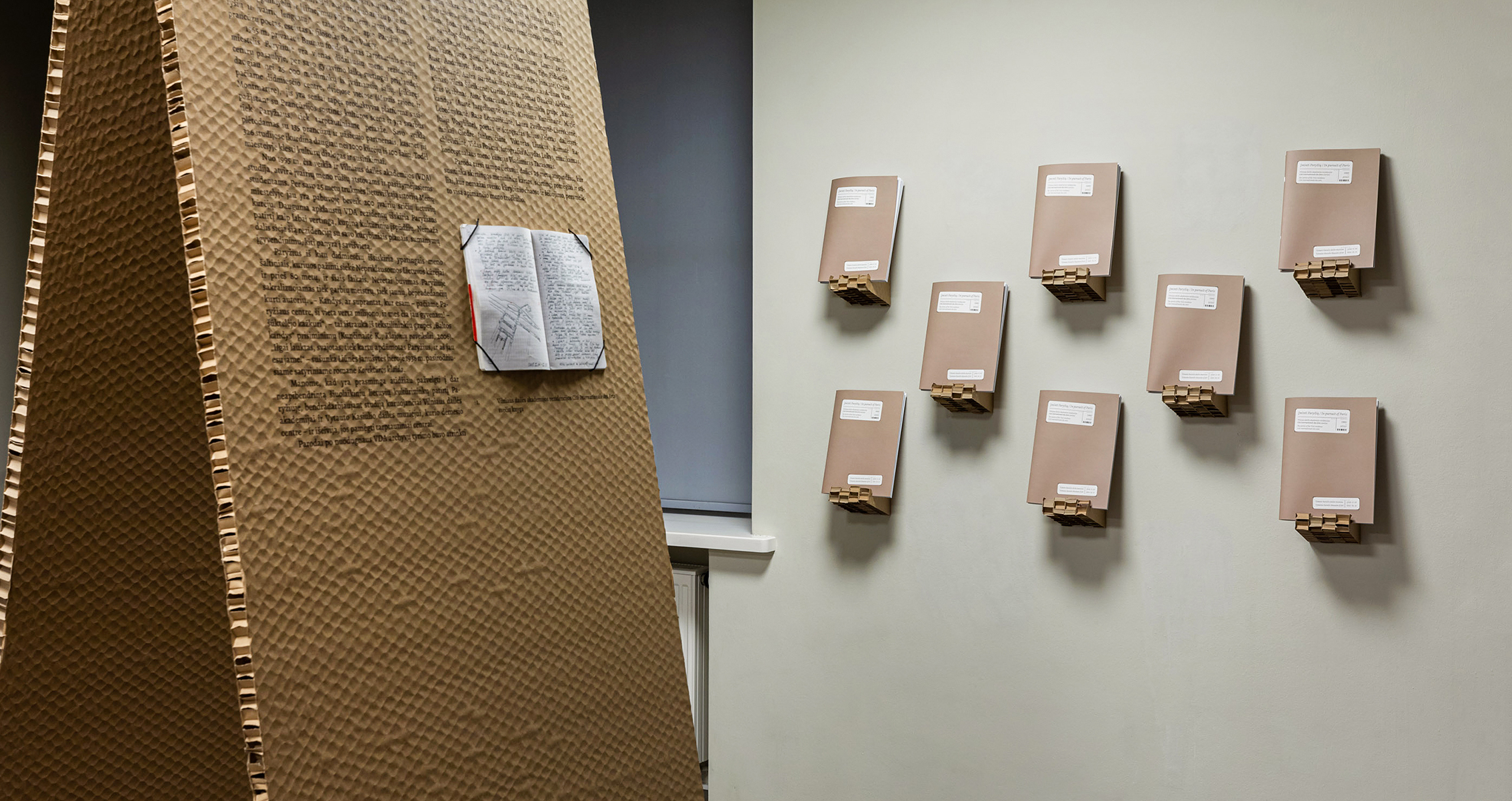
On 5 November 2020, Vytautas Kasiulis Art Museum opened the exhibition In Pursuit of Paris: the Stories of the VAA Residence Cité Internationale des Arts that brought together a wide collection of works and artefacts by 31 Lithuanian artists who participated in a residency programme of Vilnius Academy of Arts in Paris at Cité Internationale des Arts, one of the largest residency centers in the world established by the Brunau fund in 1965.
Being temporarily unable to invite you to visit the exhibition, we will be sharing texts by the curator Birutė Pankūnaitė and memoirs written by former residents.
Art residences so popular worldwide provide artists, curators and art researchers with an escape opportunity from their habitual settings and commitments and a chance to plunge into time of reflection, research and creativity. In 1927, the French poet, essayist and philosopher Paul Valéry described Paris as one of the big centres where one arrives to express oneself, to triumph and to make a name, to indulge and to be emptied, in short, ‘to gamble, to get closer to the biggest number of opportunities and wins, to women, agencies, knowledge, connections and different privileges’.
The Cite Internationale des Arts, in Paris, established in 1965 by Felix Brunau as private foundation is one of the biggest art residences centre worldwide and since its inception has offered a welcoming reception to more than 25,000 artists from the broadest range of countries. It is situated in the very centre of the mega city on two sites (Marais district and Montmartre area), and serves as a productive platform for the familiarization with the cultural scene of the French capital, playing a significant role both in Paris and internationally. The Cite develops its activities with 135 French and foreign partners, its 326 studios yearly receive over 1,000 creators from a hundred countries. It is a veritable hub of cultural dialogue and encounters.
The Vilnius Academy of Arts has its studio at the Cite since 1995, open to the representatives across all kinds of arts and to distinguished students. Over the period of 25 years of the Lithuanian history at the Cite Internationale des Arts, nearly 200 Lithuanian artists and art professionals stayed in the studio. Most of the VAA residents, when asked, describe the experience of Paris as singularly rich and abundant in cultural impressions. Quite a few linked the residence time with their creative plans and the realization of conceived ideas, others dedicated the time to cultural self-enlightenment.
Paris, among other mega cities, stands out through its exceptional artistic resources, the knowledge whereof was sought by the creators of independent Lithuania 80 years ago, neither has the city lost its power on contemporary artists. Often a sojourn in Paris is shrouded in a sacred aura, both by esteemed and junior artists and creators. Thus one of the members of the group Baltos kandys, in a book of memoirs about their travels exclaims ‘Kandys, do you get where we are – at the very centre of Paris, this place is worth a million, and guess what, we are right there’. ‘The long awaited, the imagined, the longdreamed of Paris, and I am already there!’ says the thrilled protagonist of A Misprint, Liūnė Janušytė’s 1938 satirical novel.
It seems quite meaningful that the Vilnius Academy of Arts, as the studio curator, and the Vytautas Kasiulis Museum of Art specializing, among other things, in exile artists and their preferred international centres, collaborate at taking a deeper look at the previously never summarised experience of the contemporary Lithuanian art professionals in Paris.
A thorough research into the archives of the Academy led to the selection of visual artists and practitioners from other fields, as well as art researchers whom we invited to take part in the exhibition. Thirty one artists of different generations and stylistic profiles agreed to participate. The exhibition reflects both Paris-related or inspired creative projects by the artists and the history of the residence recaptured visually and verbally.
The participants of the exhibition are: Arvydas Šaltenis, Konstantinas Bogdanas, Eugenijus Antanas Cukermanas, Laima Drazdauskaitė, Jurga Barilaitė, Dainius Liškevicius, Eglė Ridikaitė, Aušra Andziulytė, Aistė Gabrielė Černiūtė, Agnė Jonkutė, Orūnė Morkūnaitė, Aušra Barzdukaitė-Vaitkūnienė, Arūnas Vaitkūnas (d. 2005), Vilma Šileikienė, Darius Žiūra, Tomas Daukša, Aleksandras Vozbinas, Aistė Kisarauskaitė, textile artists group Baltos kandys (Austė Jurgelionytė-Varnė, Karolina Kunčinaitė, Miglė Lebednykaitė, Rasa Leonavičiūtė, Laura Pavilonytė-Ežerskienė, Julija Vosyliūtė), poet and photographer Julius Keleras, art theorists Giedrė Jankevičiūtė, Viktoras Liutkus, Ramutė Rachlevičiūtė, Vidas Poškus, photographer Alvydas Lukys and musician, conceptual artist Vladimiras Tarasovas.
The exhibition offers a broad cross-section of 25 years bringing together the artists of different generations with varied predilections and styles, a good dose of robust creative chaos and revelry, infused by the all-embracing thirst of art.
Birutė Pankūnaitė
Aušra Andziulytė
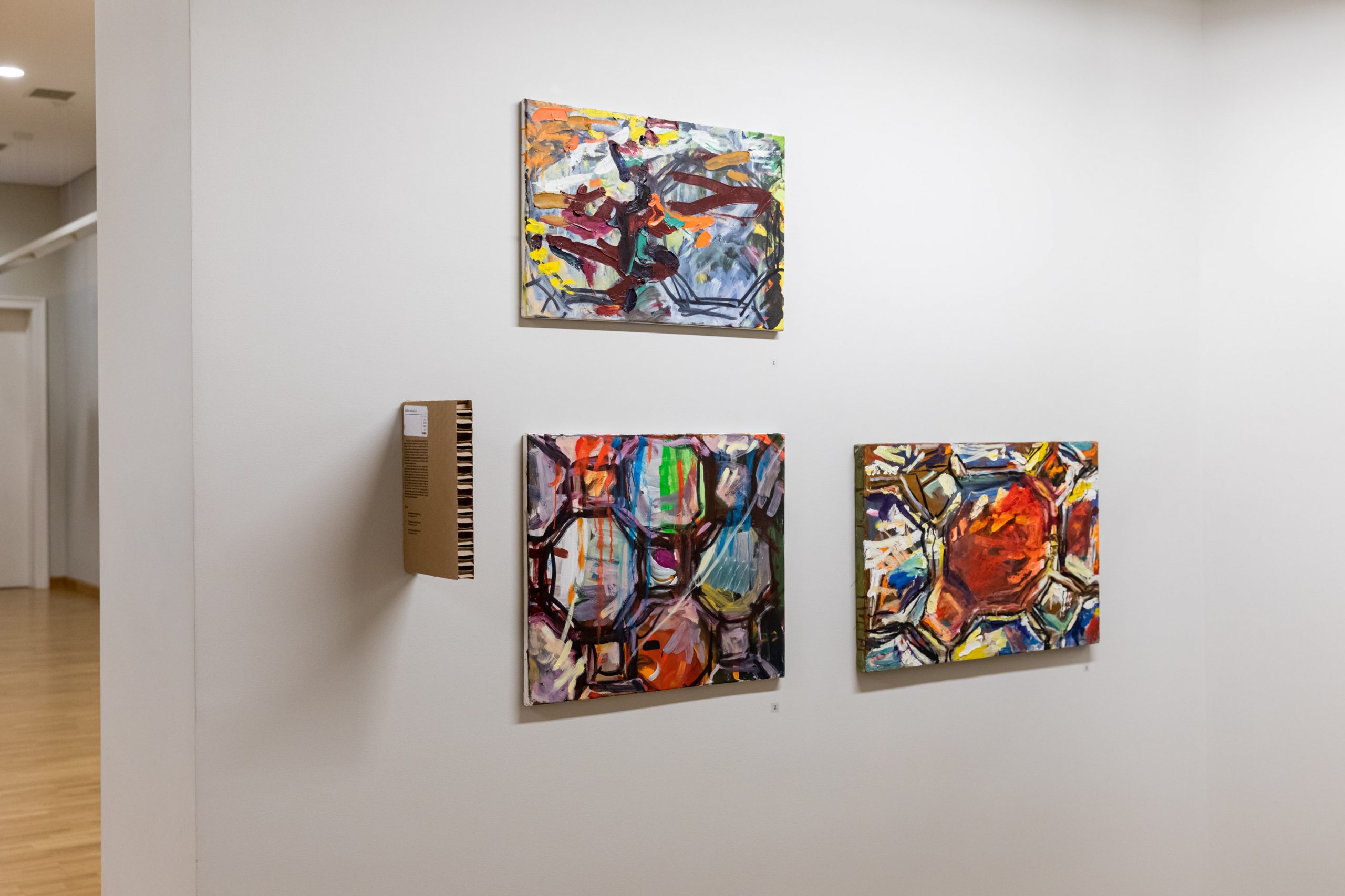
Paris. Love is such a highly individual matter. At the dawn of Lithuanian independence, en route to Taizé, we stopped in Paris. At sunrise, we walked towards the Avenue des Champs-Élysées, passing by the Petit and the Grand Palais. Thrushes were singing. It was my first time in Paris, Paris embraced me and I embraced the city. Afterwards I had numerous possibilities to return there, under different circumstances, and the feeling of warm welcome remained the same.
The Cité Internationale des Arts is a unique place. You can see the pinnacle of the spire of the Notre Dame Cathedral out of your window, and you hear the bells of churches ringing to fill up all the surrounding space. The Marais neighbourhood is the oldest part of the city. Somebody had a lot of common sense and showed enough good will to establish this oasis of arts in this part of the city. Just think of it, this is the heart of Paris. The sense of history, culture, customs, and the unrelenting flow of time are brought together. As a powerful gust of wind, the feeling of freedom overwhelms you when there. Every day brings a new joy of discoveries.
Aušra Barzdukaitė-Vaitkūnienė
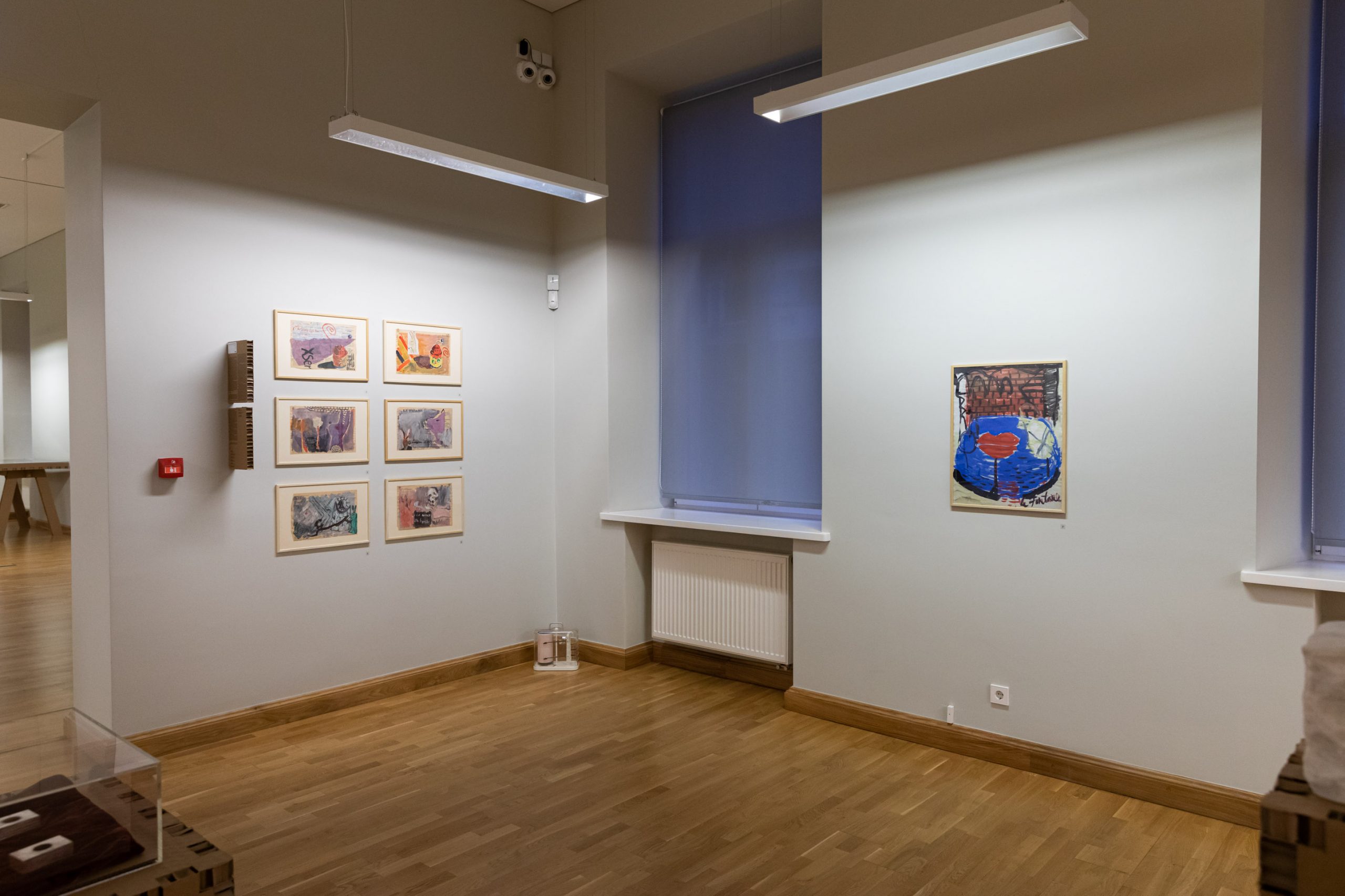
1997
In February of 1997, my husband, the painter Arūnas Vaitkūnas (1956-2005), stayed and worked at the Cité Internationale des Arts residence in Paris.
In March, I also arrived in Paris. We embarked upon endless explorations of the museums, streets and places, already familiar to Arūnas. Yet he was happy to share that with me. I found everything new, previously encountered but in art history books. We were both amused when in the morning, in the downtown Paris, on the way towards the Louvre along the rue de Hôtel de Ville, we could hear roosters crowing in a small market of plants and animals. We relished the hum and smells of the city together. Occasionally, Paris in the morning met us grey and gloomy. One overcast morning, we set out to see the impressive Château de Vincennes castle. A donjon from the 14th century, a defensive wall, and a moat loomed before our eyes. Arūnas was truly fascinated. The areas stretching around us used to be the royal hunting grounds, nowadays a public park of the city with fountains and cascades. ‘This is an Oak Grove of Paris,’ Arūnas made a joke, hinting that Kaunas, a little Paris, also has some wonderful places. The day was gloomy, with a light drizzle, but we sat at the fountain and ate white meringue cookies admiring the dramatic towers of the castle.
When back in the studio after our outings, we painted. At night, we sipped wine and talked into small hours. Sometimes we set out to explore nocturnal Paris. Our route took us along the bank of the River Seine up to the Pont Neuf and back. The silenced city still sighed with distant echoes, with the lights of the city reflected in the waters of the river. Paris seemed never to fall asleep. We both felt of having experienced this before. Sometimes we fantasized of how someday we would rest buried in Pére Lachaize next to each other.
Paris, 2003
These were warm and lazy afternoons in the Jardin des Tuileries. Arūnas sketched shapes of shadows, passers-by and kissing couples. Tomas and I sunned ourselves listening to cooing pigeons. Later, making a large detour through the Jardin du Palais Royal, we returned to our studio.
Arūnas spotted a wonderful shop of wines. The owner there sold wines from the Bordeaux region. For three euros, you could get a bottle of delicious Bordeaux, carefully wrapped in purple elastic paper. The best wines were Bordeaux Châteu de Naudonnet from 1996, or Château de Auzines, yet the red Corbiéres, intense and thick, was Arūnas’ favourite. He would open a bottle, taste the wine, and only afterwards started cooking dinner. He tore lettuce for salad, added spice, dressing, and fried roast. When he served it all to the table, we took time to eat. He was quite a cook.
Edvinas Minkštimas, a young piano player, frequented our studio. At the time, he was a student at the Conservatoire de Paris and lived in a studio. The white Chardonnay was his favourite, and it would take our conversations into open waters. Later the pianist invited us to his recital and to an after-party. A colourful crowd gathered in the studio, among them, were Russian artists residing in artists’ studios and working to make it into the galleries of Paris, Lithuanians based and working in Paris for several years already. Among the guests were several former Arūnas’ female students, they were in the city temporary, yet had dreams of moving to Paris.
On blue velvety evenings, we took walks along the banks of the Seine, followed by a white disk of the moon, looking at the clochards’ cardboard tents under the bridges, at their small bonfires, their wine drinking, accompanied by a constant rumble of African drums. We inhaled the aromas of the river and of roasted chestnuts, overpowered by the sense of an indescribable blue space, transporting us into hazy dreams.
While taking part in an exhibition opening, we met the writer Valdas Papievis. We talked about Lithuania over French champagne. Tomas found frog legs delicious.
All three of us worked in ink, pencil or watercolour, making drawings, sketches, plans and documenting our routes; we jotted down our observations or notes for future on any random piece of paper or a newspaper. All the sketches and notes, in a spontaneous manner were arranged on the wall of the studio, each day the wall became thicker, broader and richer. Our joint creative project emerged, unforced, without any deeper reflections, from this relaxed, jazzy lifestyle, from this intoxication of being together, from our impressions and Parisian atmosphere. Authentic as air, it was spontaneous and natural in preserving the unique styles of each of us and becoming a dialogue. We exhibited this joint artistic enterprise, this Paris studio wall, under the title A wall of Paris Cité des Arts in 2004, at Meno parkas gallery.
When we felt ready for serious art, we returned to the Louvre. Previously we never dedicated more attention to Nicolas Poussin, yet now this painter seemed fascinating to us with his mysterious figures carrying gigantic bunches of grapes and his hard-to-decipher narratives. We would stand transfigured by the dramatic, otherworldly light in the paintings by Georges de la Tour. Long hours passed in front of the paintings by Jean-Baptiste-Siméon Chardin enchanting with his magic of things. Arūnas tried to mimic the movement of Fragonard’s brush. He was in awe from the sophistication of the movement of the artist’s hand across canvas.
We used to travel to the Musée Gustave Moreau in Montmartre, on the Rue de la Rochefoucauld. A day would slip quickly while looking at his drawings and watercolours accessible in the sliding glass displays. We analysed the paintings showcased in the artist’s studio searching for hints of contemporary art in them.
After a while, we returned to contemporary art, for that we would ride the metro to the Bibliothéque François Mitterrand station, from where we reached the area of alternative art galleries. Sometimes we spotted some good and quality art, at other times, unbalanced and crazy as Beaujolais Nouveau wine.
The spring in Paris boomed with chestnuts in blossom. Reflections of the white facades swayed in the waters of the Seine. In squares, couples in love sipped their wine from bottles wrapped in newspapers, and we remained unwilling to let this movable feast of life ever end.
From: Aušra Barzdukaitė-Vaitkūnienė. Toks gyvenimo kvapas, Kaunas: Bonarta, BalticSign, 2009, p. 134, 138–139.
Aistė Gabrielė Černiūtė
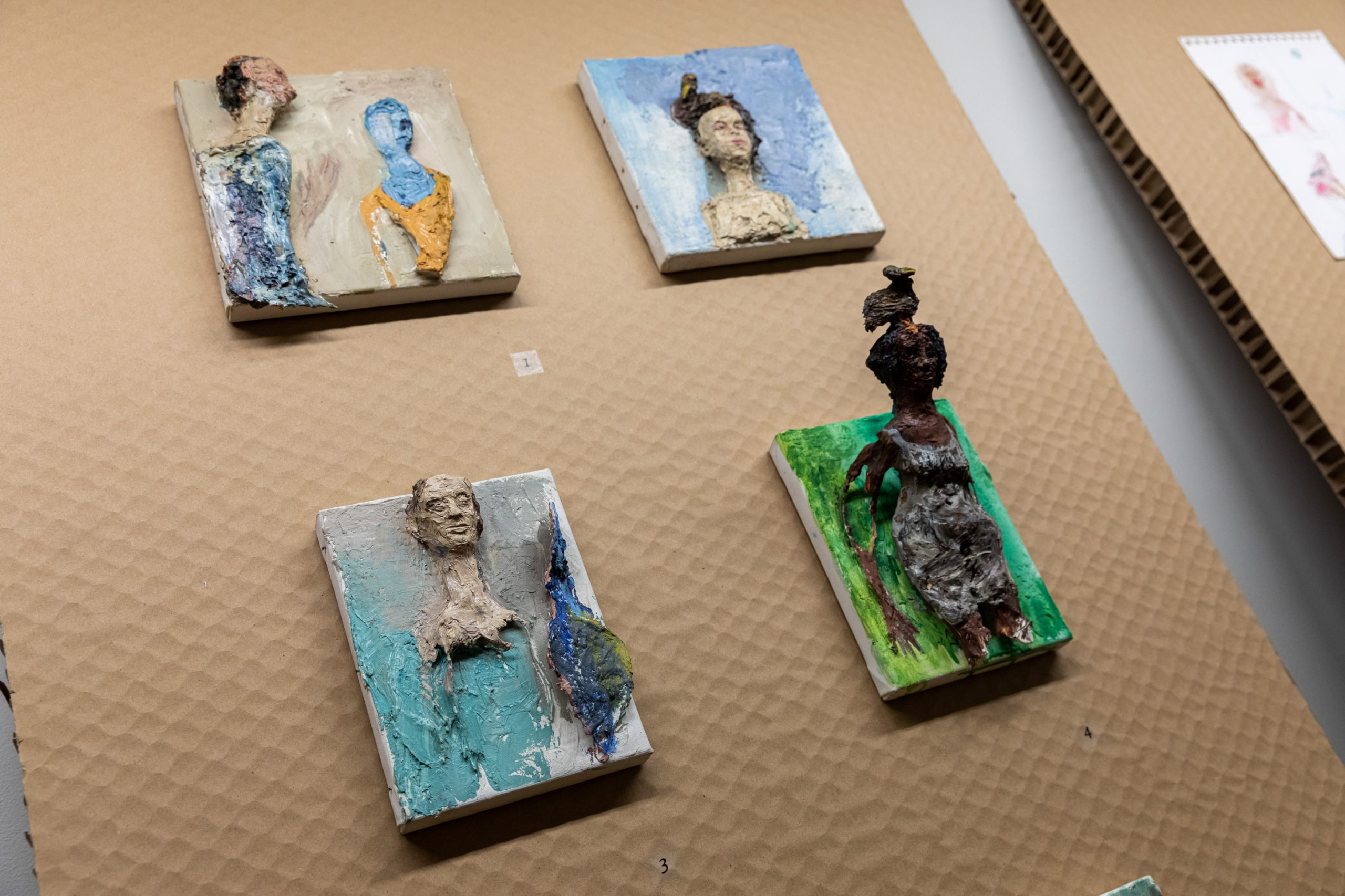
My first time in Paris closely followed the opening of the Lithuanian boarders, in the early 1990s. My parents left without much thinking what was going to happen, I was only 11. We travelled by car, a small Lada.
That is why Paris will always remain special to me.
My parents longed to see the capital of culture. It was for them like a test of their inner intuitions, their talents, and, finally, it was important to see everything with their own eyes.
My dreams, however, came true only in 2015, when I received the opportunity to use the accommodation of the Academy’s Paris residence. Quite a time had passed since the graduation of my Master’s at the Academy, and coming to Paris was like a new stage of independent studies. That is why I went to Paris repeatedly in 2016 and in 2018. I believe I will visit Paris again, to continue discussions with myself. First I felt annoyed because of not coming to this place earlier, where was I … how could I learn painting seeing so few original works… then came regret… self-pity why I am only a painter… in Paris one feels like writing, dancing and singing… Thus during my last years I tried writing, jotting down all kind of thoughts, o rather words crossing my mind… Let us call them poems though I never think of myself as a poet. It is just this feeling of overwhelming emotions, impossible to express promptly enough through painting. These two poems capture my absolute emotional experience of Paris. Perhaps, if I moved to Paris, things would look different.
Agnė Jonkutė
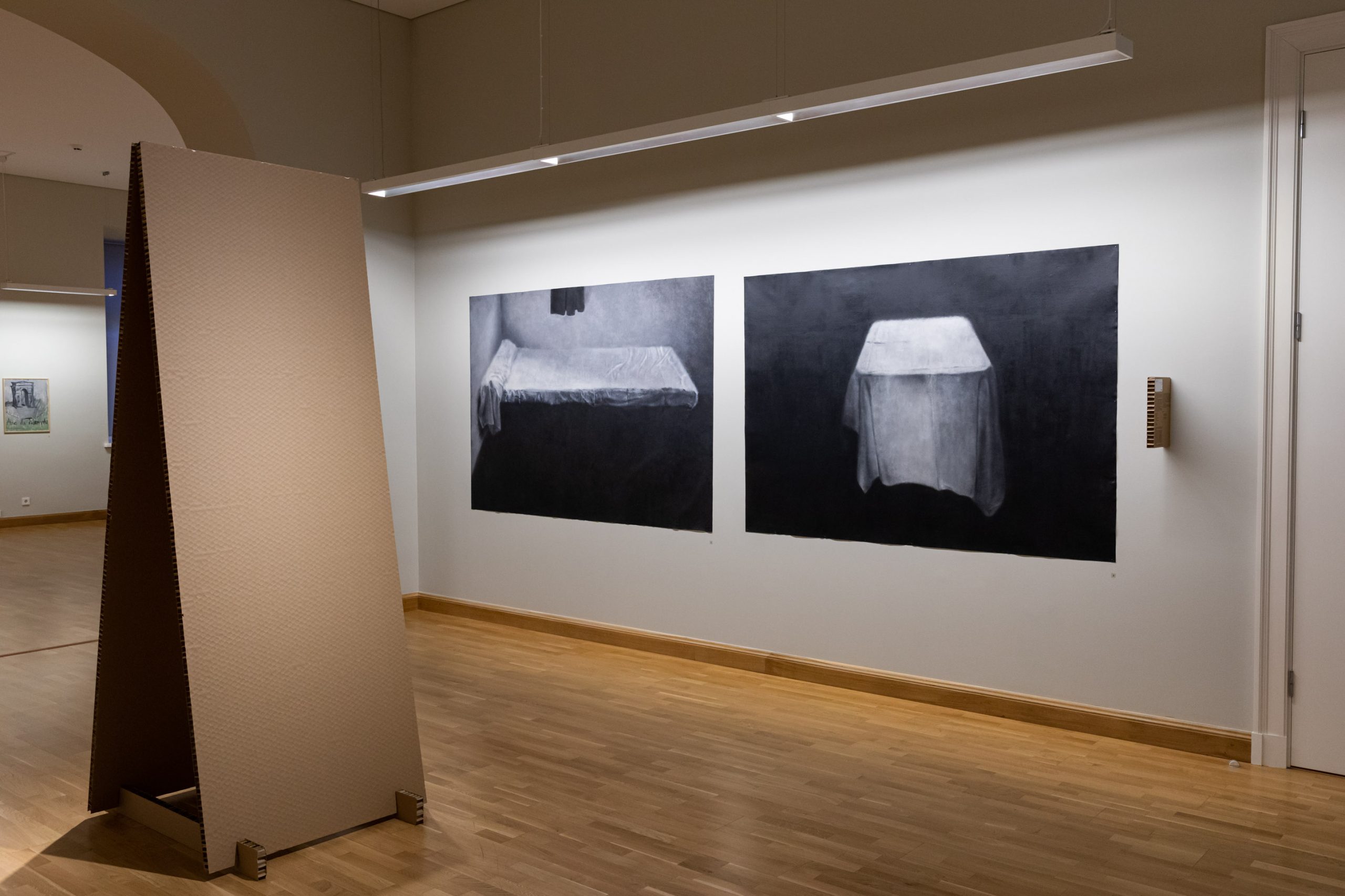
I received Paris as a present.
When completing my Master’s studies in painting at Kaunas Faculty of the Vilnius Academy of Arts I was presented a month residence at the studio of the Cité Internationale des Arts.
In Paris, I absorbed everything greedily through my eyes. The avalanche of information was balanced by the ascetic setting of the studio. I saw a black curtain, an empty white bed under it and an imprint of a person who had slept in it. That view cast such a powerful spell over me that I painted it upon arrival home.
The painted bed became the corner stone of a five-year-long cycle The facts of inexistence.
I could not find such an all-embracing philosophical term in Lithuanian, therefore I left the English title, where I understand inexistence as:
having no existence,
nonexistence,
inherence,
subsistence
that which exists within,
consistent,
want of being or existence,
or
небытие,
неотъемлемость,
присущность.
I was mostly fascinated by the fact that it is something existing within, inherent, but also non-being, non-existence.
The painting did a lot of travelling. I took it to the Francophone Arts and Sports Games in Nigeria. The ‘Bed’ and one other work created during the event brought me some unforgettable impressions: I was decorated with the gold medal, had to climb onto the real Olympic pedestal and sing the hymn of Lithuania in the middle of Africa.
The painting disappeared on the way back, as later turned out, at the Paris Airport… Only the empty tube I used for packing the painting arrived in Vilnius. I tried different avenues to find it, but to no avail. After a month of intense international searching, I had to accept the fact that it was lost.
Life went on; I flew to Amsterdam. On the way home, at the International Vilnius Airport, from a distance and through an opaque glass, I spotted a shadow of something long, propped against a wall. I scrambled towards it, trying to convince the airport staff that it was my ‘Bed’, because I immediately knew it was my lost work, though I was sure it carried only my name and the title, no other coordinates (it was the time before social networks). At the Lost and Found nobody was willing to believe that I could think it was my rolled painting when I only saw a shadow.
Paris came back. Feast.
Gradually my ‘Bed’ attracted bedfellows, I have painted a table, and pillows with imprints left by someone’s head after a night’s sleep.
Aistė Kisarauskaitė
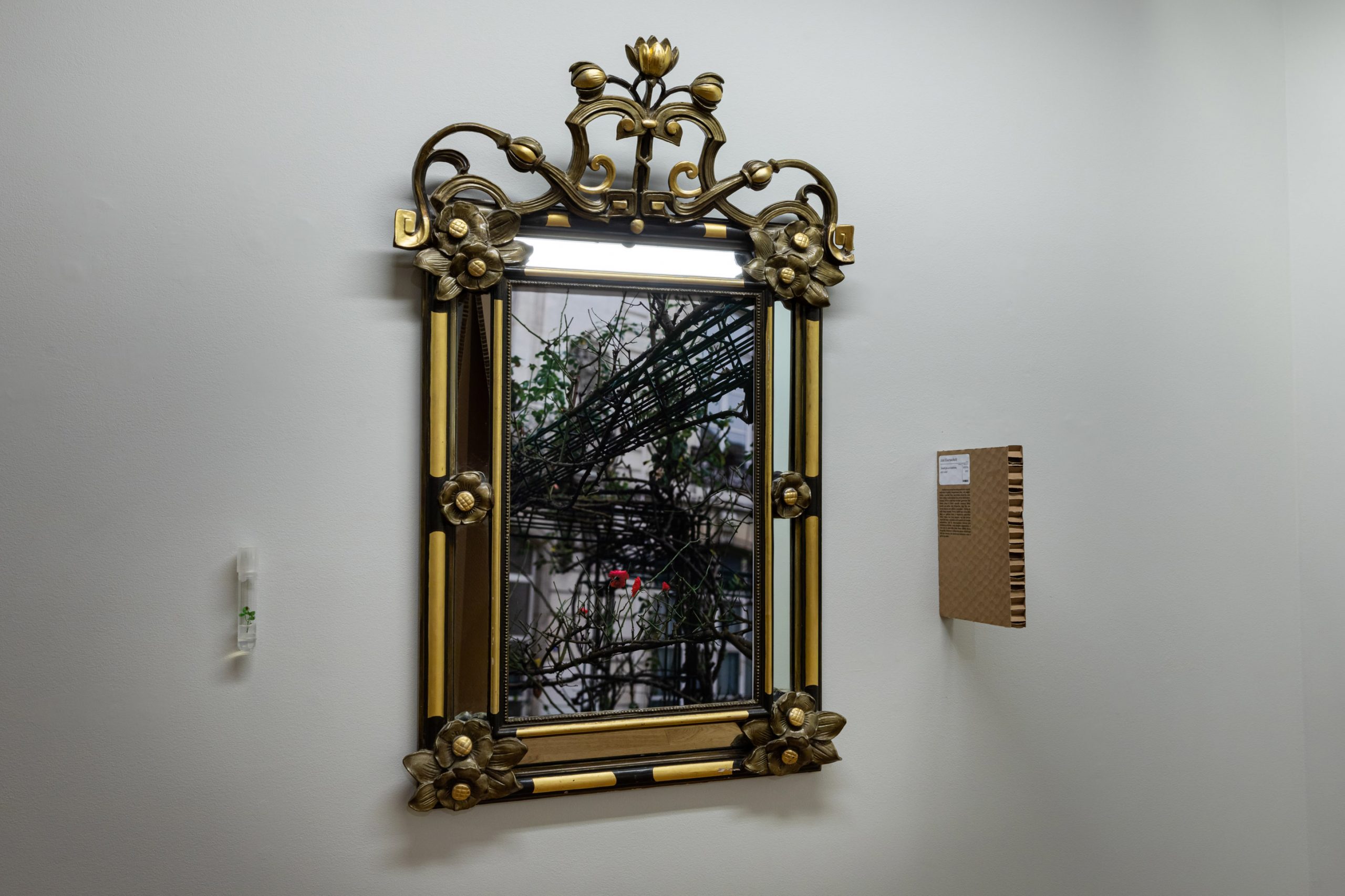
Harmonized with architecture, 2013-2020
My original idea was to exhibit pictures of rose bushes taken during my 2013–2014 residence in Paris, a rose grown in a laboratory tube, and a video I expected to shoot in Paris this July. As COVID-19 ruined my residence plans, I resolved to include the same photographs of roses the way we often keep our travel memories: images stuck behind a bookcase glass doors. I hoped to speak about a longing for far away countries, about thwarted travel and the settling dust of oblivion. However, I was told that such a work could not be displayed as it was at odds with the architecture of the exhibition. Thus on display is a piece that agrees with the architecture: a rose grown in a lab tube, and a photograph taken at the Saint Gilles du Grand Veneur public garden in 2013–2014. The requirement to oblige the interior is not new to either women or roses, as is not an imprisonment in a golden frame or life behind glass.
Alvydas Lukys
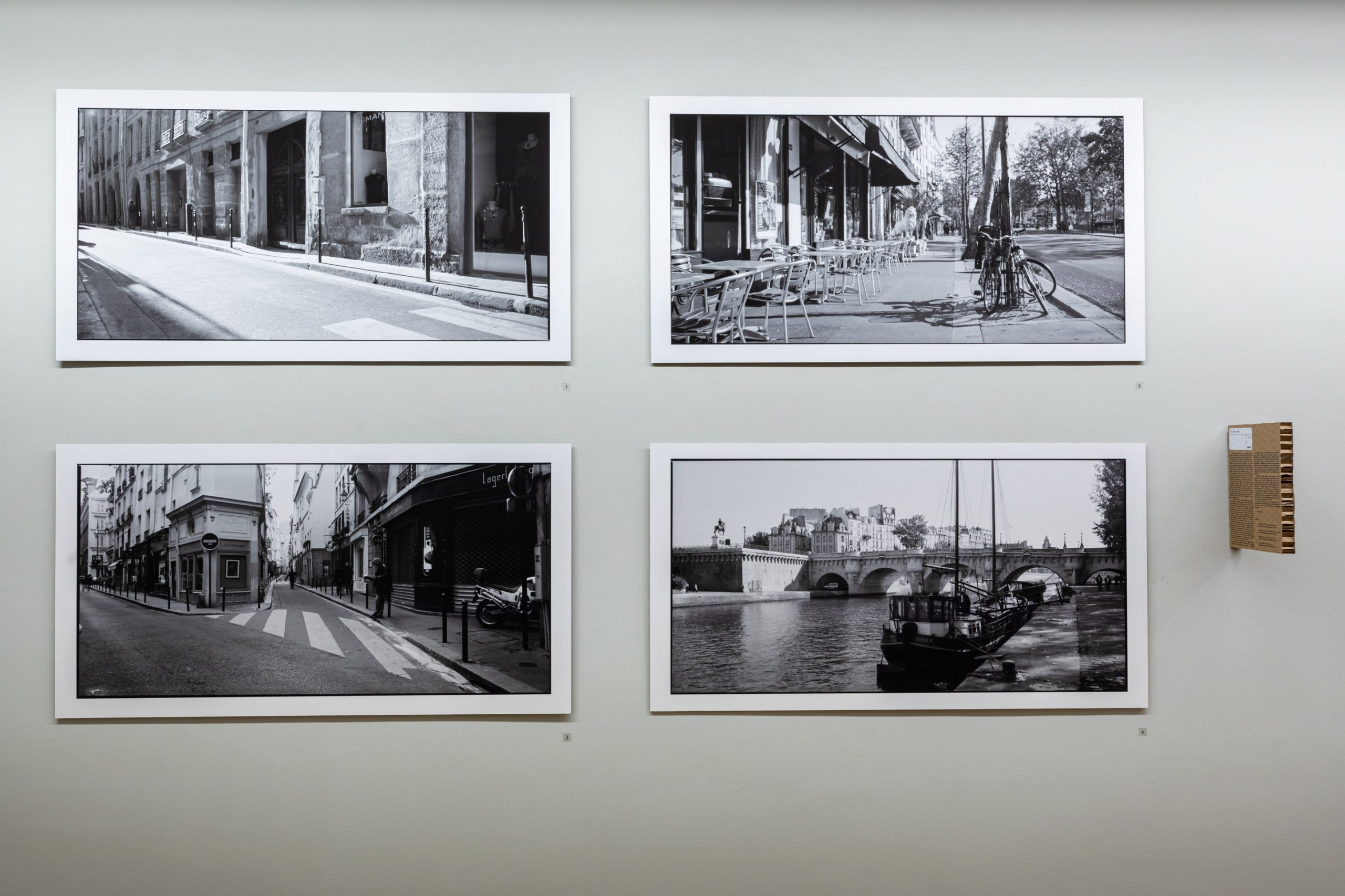
The pictures were created in 2007, when it was my turn for a stay at the studio of the Cité Internationale des Arts in Paris. At the time I was about to finalize a Project under a working title of Déjà vu. Later it was published like a photographic essay in a book, titled The Past Continuous. I refer to this project, as in Paris it assumed a slightly different character not only because of its French title, but because while there, my initial scepticism about a sojourn in ‘the capital of culture’ evolved into a cultural project in the literal sense of déjà vu. For the purposes of the book, I used one of the first mobile phones with a primitive camera installed into it. The camera produced kind of dream like images, resulting from imprecision of detail. The map of Paris became a cultural field for a journey in time: I was under an impression of having visited the place though it was my first time in Paris. Even more amazing was the fact that after taking a glance at a map of the town, I never had to use it to navigate myself. All was familiar within a radius of five kilometres and I never got lost. I am a sceptic, but the names of the streets and passages struck as very familiar. My common sense prompted that I did read Hugo, Maupassant, Dumas, the writers who indulged in endless descriptions of places and detail. Yet still, the ease of finding one’s way about the Marais, Saint-Germain-des-Prés, Montparnasse and the Quartier Latin was amazing.
Thus, the method. I reckon that the gradation ‘objective, more objective, most objective’ makes little sense, because the problem of depicting reality continues to be undefined as the technical means still fall short of recreating the precise conditions of ‘human perception’ despite all the efforts by the industry of image creation. Yet a wide frame at least produces horizontal field that approximates human vision. For my stay in Paris, I had manufactured a special still camera for which I used spare parts of the professional photography equipment from around the mid-20th century. The main part of this camera was the Schneider-Kreuznach lens Agulon of a 90 mm focal length and a panoramic cassette of a medium format that explored the projection of lens for long (wide) shot pictures just fine. These are two squares placed next to each other creating a similar-to-human-vision perspective. I did not bring that camera along with a specific intent of accomplishing something; I rather was eager to test this conceptually unique tool undisturbed by anyone. Such was the technical aspect.
At the time, I was interested in Eugène Atget’s pictures of Paris. He is considered among the first documentary photographers who recorded the architecture of Paris at the very dawn of the town’s modernization. I did not have a goal to follow in the footsteps of Atget, rather, I tried to use his strategy of documentation with minimal ‘artistic interference’, attempting to maintain an utmost documentary approach and objectivity in the recording of detail. It is therefore natural that Paris looked so different from his photographs. I produced medium size black and white photo stock and gave it to develop to a Professional laboratory on the Rue de la Roquette next to the Père Lachaise Cemetery. It struck me that the negatives I received were very similar to stills from a widescreen film noir. The déjà vu effect did not let me down again.
A common notion of Paris is that of a place in constant commotion. Yet this is only true about touristy places. You can always find some quiet streets in Paris. This series aspired to highlight that particular aspect of the city. The title Sunday is more about the atmosphere of an early morning when nobody is in a hurry yet. A kind of inspiration or analogy can be referenced to Louis Daguerre’s photograph Boulevard du Temple, Paris, 8 am. It shows two lonely figures recorded in the lower left of the plate. Only two of them – the still ones – are in the picture, because Daguerre required a long exposure time, so the moving people were not captured.
In a sense, these pictures of Paris by both Atget and Daguerre are so interesting to me due to that lazy and even boring atmosphere they share.
2019, Vilnius
1 Goštauto st, Vilnius, Lithuania
+370 5 261 6764.
kasiulio.muziejus@lndm.lt













